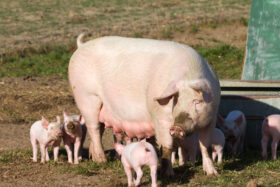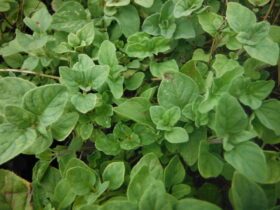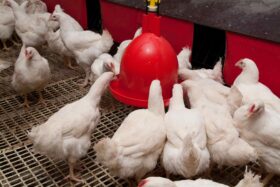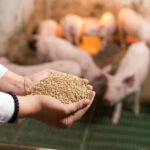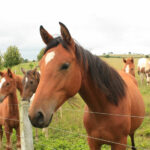Conference report
To optimize weaner performance, it is helpful to understand the stressful situation the piglets are facing. In contrast to weaning in nature, which occurs gradually until completion at approximately 4-5 months, weaning in intensive pig operations is an acute process, typically occurring at 3-4 weeks of age. This critical phase subjects piglets to multiple stressors, which can have cumulative effects on their health and development.
Furthermore, the weaning process usually coincides with a decline in the levels of maternally derived antibodies. As these antibody levels decrease, piglets become increasingly susceptible to infections, particularly during the stressful transition to solid food and movement from the sow to the new nursery environment. Managing the weaning process carefully is crucial to minimize stress and support immune function.
Weaning factors that influence a successful weaning
Several aspects must be considered to provide the weaning piglets with the best conditions, and diverse measures must be taken. These measures range from the social environment to nutrition, hygiene, and the people dealing with the pigs.
Social dynamics
When forming nursery groups, aim to keep pigs in these groups as long as possible. Moving all pigs to their new environment at the same time can promote a more rapid establishment of social stability. If possible, once weaning groups are selected and placed in the nursery, keep these groups together to harvest. Any change in the pig group will again result in the need for a new hierarchy to be established, along with fighting and disrupting the group. “Allow newly selected nursery groups to establish their hierarchy by avoiding interventions during the first 48 hours, except to treat sick or injured pigs”, recommends Dr. Parke. “A well-enriched environment, such as chewable ropes and toys, can help reduce stress levels and may reduce the frequency of abnormal behaviors such as tail biting and aggression.”
Environmental management
The piglets should be kept at an optimal temperature between 27-30°C – depending on floor type, weight, and age of piglets. Adding a heat lamp/floor mat warm area for just-weaned piglets will further assist thermoregulation and minimize stress through the weaning transition.
Proper ventilation is crucial for maintaining air quality and preventing the buildup of harmful gases like ammonia. Good airflow helps regulate temperature and humidity, reducing stress on the pigs. However, care must be taken to avoid drafts that can chill young pigs. For example, a draft of 0.5 m/second can ‘feel’ like an 8°C drop for the piglet.
Targets for gas, dust, and bacteria levels
| Risk factor | Gas | Total dust | Respirable dust | Bacteria | ||
|---|---|---|---|---|---|---|
| Ammonia | Hydrogen sulphide | Carbon dioxide | ||||
| Target levels | <10ppm (20ppm max.) | <5ppm | <3,000ppm (aim for <1,500ppm) | 2.4mg/m3 | 0.23mg/m3 | 100,000 CFU/m3 |
Flooring and pen materials should be robust, in good condition, and easily cleaned to reduce the risk of skin abrasions and subsequent infections.
Provide sufficient space (recommended 0.19 m2/8 kg pig on slat/solid floor) in pens to minimize competition for feed and water and to reduce social stress among piglets.
Weaner pigs benefit from using the same type of feeder in the nursery as in the farrowing room. This consistency can help to reduce stress and anxiety during the transition to the nursery and increase the feed intake during the first few days post-weaning.
Nutritional support
Weaning stress and poor feed intake post-weaning commonly result in dysbiosis and a decrease in villus height in the small intestine of piglets. Associated digestive impairment and altered gut morphology can lead to decreased nutrient absorption, as well as enteric and systemic health issues. A palatable transition diet, from 7 days pre- to 7 days post-weaning, is recommended to keep piglets eating. The composition or form of the transition diet should remain the same during this period. Consider using functional feed additives, such as phytomolecules or egg immunoglobulins, to support microbial modulation and gut integrity.
Ensure piglets have access to fresh, cool, and clean water (minimum water flow of 0.5-0.7L/minute), with enough drinking space (maximum of ten piglets per drinker). Consider providing additional water supply points (e.g., bowls) in the first week.
Hygiene and biosecurity
All-in, all-out management avoids the mixing of different age groups. It is particularly beneficial for weaner pigs, as it helps minimize disease transmission. After removing each batch of weaners, the nursery must be thoroughly cleaned, disinfected, and dried. This includes not just the floors but also feeders, waterers, and any equipment used in the room.
There should be strict rules for everything that comes through the external perimeter fence. Internal biosecurity is also essential, e.g., changing into clean, disinfected boots and thoroughly washing hands when moving between rooms/buildings.
Routine monitoring
Regular and proactive monitoring of weaner pigs, including carefully observing their behavior, is essential for ensuring their health and optimizing growth performance. By implementing effective monitoring strategies, producers can identify potential challenges early and take timely interventions to minimize negative impacts.
Pig positive people
Dr. Parke emphasized that the attitude and skills of stockpersons play a significant role in reducing stress during this vulnerable weaning transition period. Positive handling can improve piglet welfare and their future response to human contact, which is crucial for their short and long-term production performance.
Piglets that receive positive handling are likelier to demonstrate affiliative behaviors towards humans, facilitating smoother transitions during weaning and enhancing their overall development. Stockpersons should be trained to recognize signs of stress or discomfort in pigs.
Collaborative approach
“Collaboration is critical for successful weaning; we can’t have silos in pig production unless it’s to store feed,” joked Dr. Parke. “By adopting a proactive approach that emphasizes collaboration and comprehensive management strategies across the production system, pig welfare and long-term productivity of the herd will be enhanced,” she concluded.
EW Nutrition’s Swine Academy took place in Ho Chi Minh City and Bangkok in October 2024. Dr. Merideth Parke, Global Application Manager, Swine, was one of the highly experienced speakers of EW Nutrition. She is a veterinarian who strongly focuses on swine health and preventive medicine.
